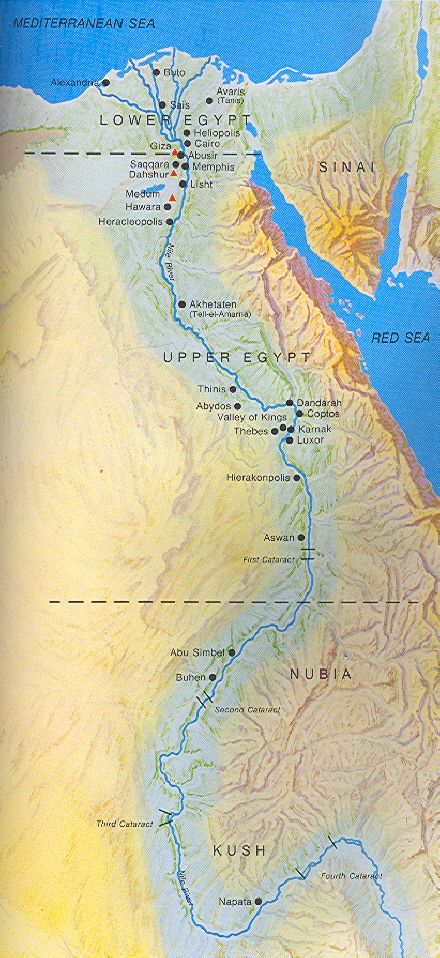HOME / Table of Contents = Civilizations - Cultures - Areas - Regions - Prehistory
Other Archaeological Sites / The Neolithic of the Levant (500 Page Book Online)
Egyptian History
CHRONOLOGY (Petrie Museum) [University College London]


 Some 60000 years ago the Nile River began its yearly inundation of the land along its banks leaving behind rich alluvial soil. Areas close to the floodplain became attractive as a source of food and water. In time climatic changes, including periods of aridity, further served to confine human habitation to the Nile Valley although this was not always true. From the Chalcolithic period (the Copper Age : beginning about 4000 BC) into the early part of the Old Kingdom people apparently used an extended part of the land. In the 7th millennium BC Egypt was environmentally hospitable and evidence of settlements from that time has been found in the low desert areas of southern or Upper Egypt; remains of similar occupation have been discovered at Nubian sites in modern Sudan ...
Some 60000 years ago the Nile River began its yearly inundation of the land along its banks leaving behind rich alluvial soil. Areas close to the floodplain became attractive as a source of food and water. In time climatic changes, including periods of aridity, further served to confine human habitation to the Nile Valley although this was not always true. From the Chalcolithic period (the Copper Age : beginning about 4000 BC) into the early part of the Old Kingdom people apparently used an extended part of the land. In the 7th millennium BC Egypt was environmentally hospitable and evidence of settlements from that time has been found in the low desert areas of southern or Upper Egypt; remains of similar occupation have been discovered at Nubian sites in modern Sudan ...
Enough pottery has been found in Upper Egyptian tombs from the 4th millennium BC (in the Pre-Dynastic period) to establish a relative dating sequence. The Pre-Dynastic Period which ends with the unification of Egypt under one king is generally subdivided into three parts, each of which refers to the site at which its archaeological materials were found: Badarian, Amratian (Naqada I) and Gerzean (Naqada II and III). Northern sites (from about 5500 BC) have yielded datable archaeological material of apparent cultural continuity but no long-term sequences such as those found in the south ...
Selected Excerpts on Egyptian History
Egypt, Canaan, and Israel in Ancient Times
Donald Redford -- Princeton University (1992)
The Neolithic of the Levant (1978)
A.M.T. Moore [Oxford University]
The History of the Ancient Near East Electronic Compendium

